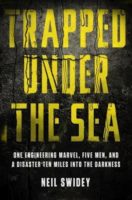...codes which they are proposing in this recommendation."
Recommendation 5. NIST recommends that the technical basis for the century-old standard for fire resistance testing of components, assemblies, and systems should be improved through a national effort. Necessary guidance also should be developed for extrapolating the results of tested assemblies to prototypical building systems.
Magnusson: "Yes, current fire resistance testing methods have been used for a century with excellent safety results. More sophisticated testing methods result in less fireproofing than current testing methods."
Schulte: "There are problems with ASTM E119, but the fire loss history demonstrates that ASTM E119 is still a useful tool. Is it absolutely essential that we abandon ASTM E119 in favor of something far more complex? I'm not sure that the results of using a more complex analytical tool will be any better than already achieved using ASTM E119."
Recommendation 6. NIST recommends the development of criteria, test methods, and standards: (1) for the in-service performance of spray-applied fire resistive materials (SFRM, also commonly referred to as fireproofing or insulation) used to protect structural components; and (2) to ensure that these materials, as-installed, conform to conditions in tests used to establish the fire resistance rating of components, assemblies, and systems.
Magnusson: "The key question is what standard would be applied? Is it that the fireproofing must resist the impact of an airplane attack? That is not possible; therefore, fireproofing standards had absolutely no bearing on the outcome of the WTC attack."
Schulte: "Are there problems with spray-applied fireproofing? Yes, but do we need an entirely new and more costly inspection procedure to address those problems. Perhaps, we might just want to actually enforce the regulations regarding inspections of spray-applied fireproofing that we have in place right now."
Recommendation 7. NIST recommends the nationwide adoption and use of the "structural frame" approach to fire resistance ratings.
Magnusson: "NIST has provided no scientific data showing that the structural frame approach has any better safety record than the current code approach. The use of the structural frame approach would have had absolutely no bearing on the outcome of the WTC attack."
Schulte: "Every model building code has utilized the "structural frame" concept for the last three decades. The real question is what fire-resistance ratings are necessary for the structural elements of a high-rise building. "
Group 3. New Methods for Fire Resistance Design of Structures
The procedures and practices used in the fire resistance design of structures should be enhanced by requiring an objective that uncontrolled fires result in burnout without local or global collapse. Performance-based methods are an alternative to prescriptive design methods. This effort should include the development and evaluation of new fire resistive coating materials and technologies and evaluation of the fire performance of conventional and high-performance structural materials. Technical and standards barriers to the introduction of new materials and technologies should be eliminated.
Recommendation 8. NIST recommends that the fire resistance of structures should be enhanced by requiring a performance objective that uncontrolled building fires result in burnout without local or global collapse.
Magnusson: "This is a good objective."
Schulte: "The model codes presently in use in the United States already...


Post a comment to this article
Report Abusive Comment